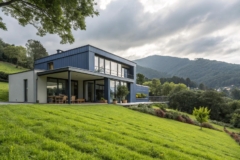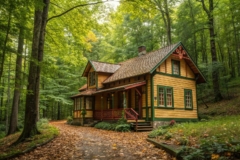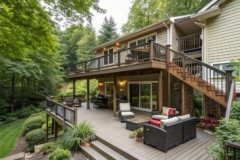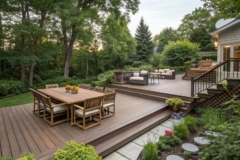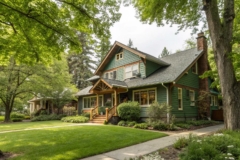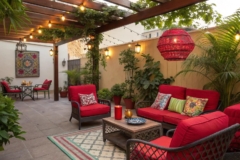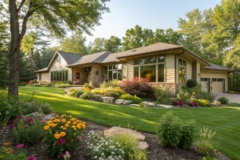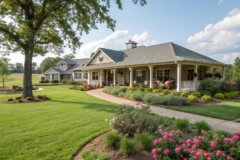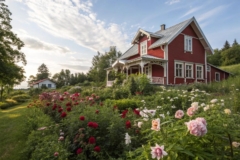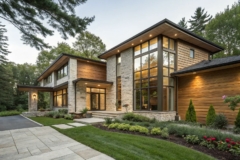1. Experiment with Retro Colors

Retro colors can give your split-level home a nostalgic yet fresh feel. I once used a soft orange and teal combo that beautifully echoed mid-century vibes.
These products might be useful:
- Exterior Paint Set: Refresh your home’s facade with a retro paint set for vibrant, mid-century appeal.
- Outdoor Lighting Fixtures: Enhance your home’s retro look with stylish outdoor lighting fixtures, adding warmth and nostalgia.
- Decorative House Numbers: Update your home’s entry with retro-inspired house numbers for a charming, authentic touch.
2. Opt for a Two-Tone Scheme
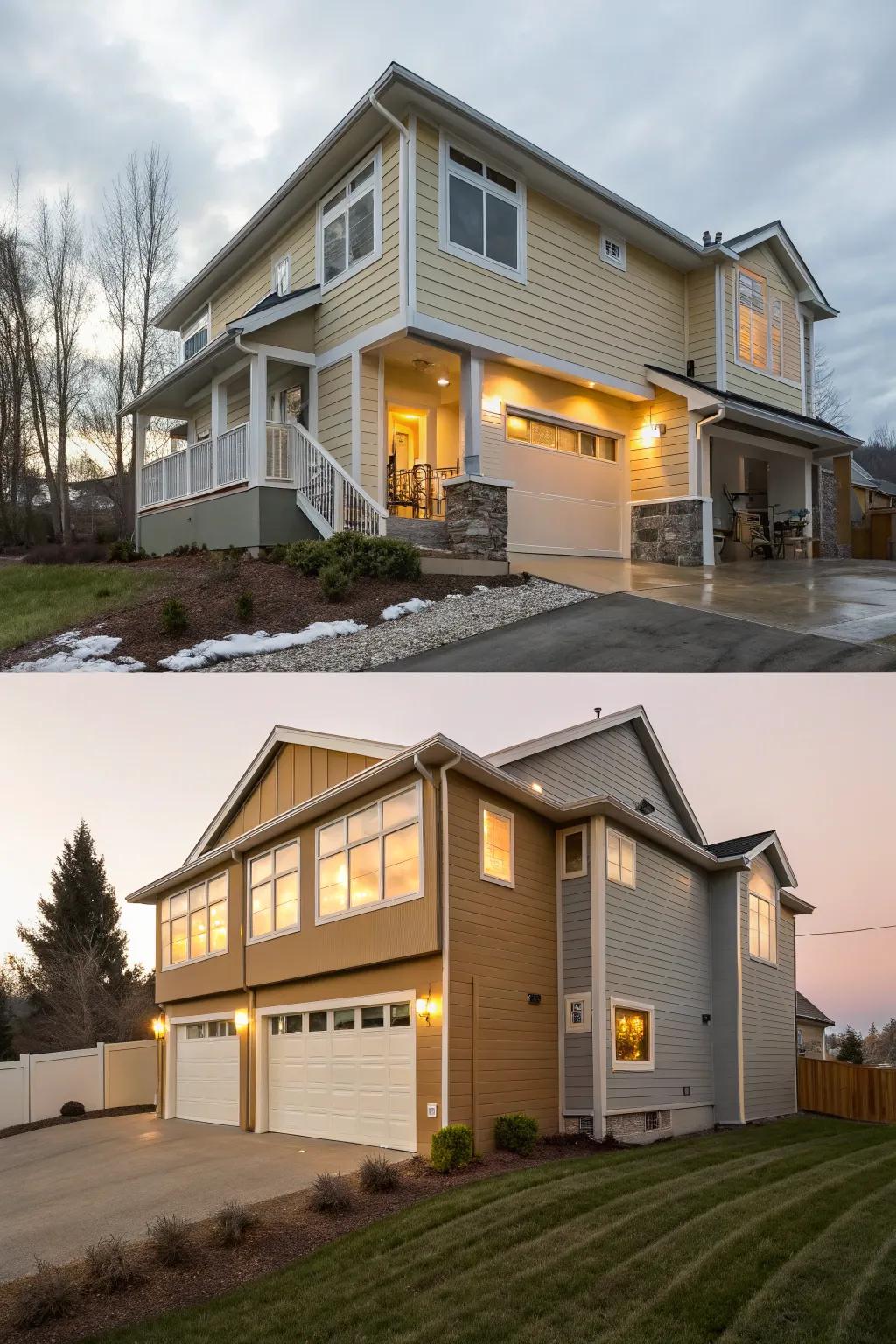
A two-tone scheme can define different levels of your home, making it look more dynamic. When I applied this to a client’s house, it instantly modernized the whole appearance.
Items that may come in handy:
- Exterior Acrylic House Paint: Revitalize your home’s look with durable exterior acrylic paint available in stunning color choices.
- Exterior Paint Primer: Ensure a smooth finish and long-lasting paint job with this high-quality exterior primer.
- Painters Tape for Crisp Lines: Achieve perfect, clean lines for your two-tone scheme with this high-quality painters tape.
3. Add a Pop of Color with Doors
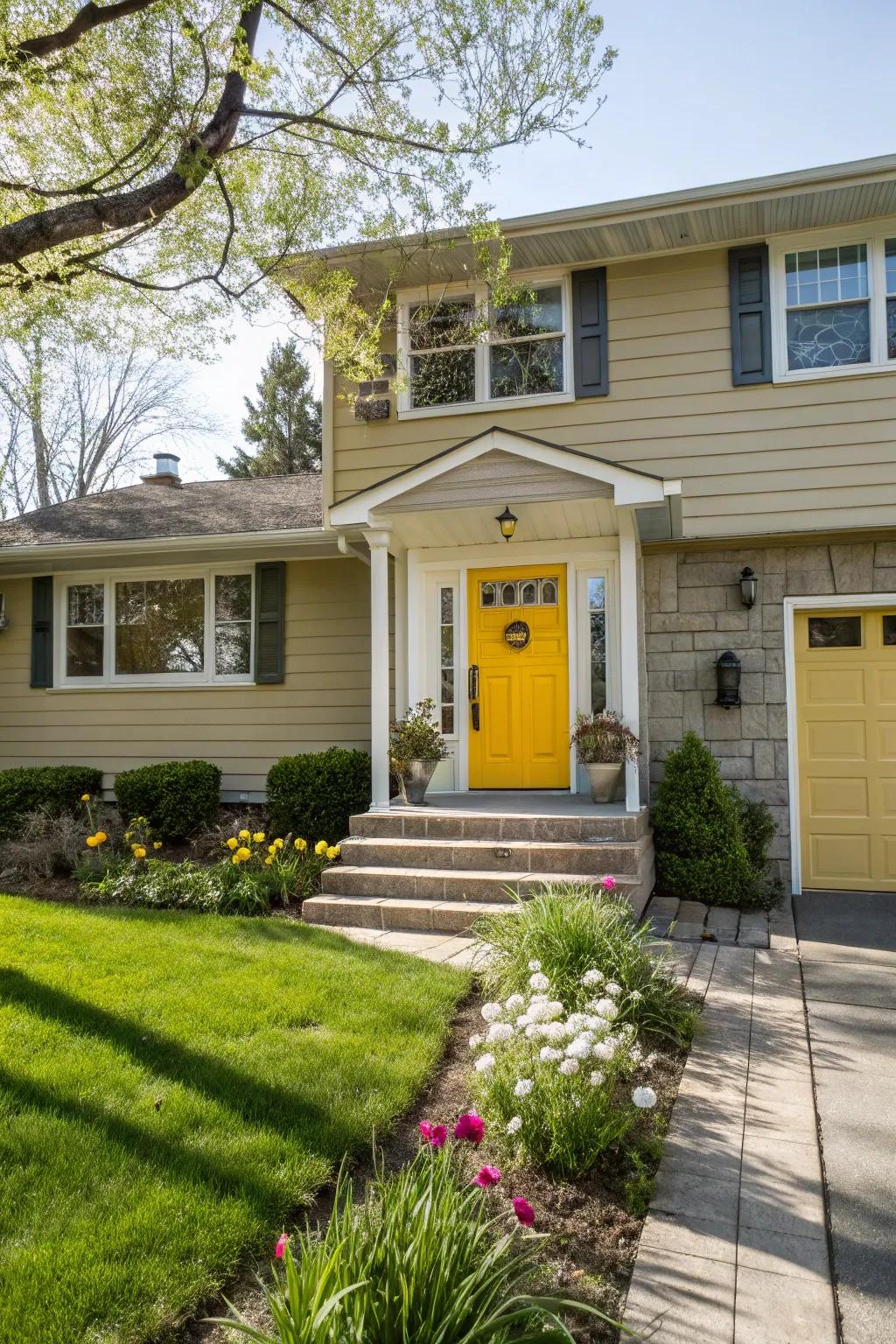
A brightly colored front door can add a pop of personality to your home. I painted my own door a sunny yellow, and it never fails to make me smile every time I come home.
A few suggestions:
- Exterior Door Paint: Transform your entrance with high-quality exterior door paint for a vibrant and welcoming look.
- Decorative Door Wreath: Enhance your brightly colored door with a stylish wreath for a charming entrance year-round.
- Outdoor Door Mat: Add an inviting outdoor door mat to complement the vibrant front door with elegance and function.
4. Incorporate Natural Tones

Natural wood tones can blend beautifully with landscaping, making your home feel part of its surroundings. My own split-level has cedar accents that look stunning against a leafy backdrop.
Useful items to consider:
- Exterior Cedar Wood Stain: Enhance your home’s natural beauty by applying this rich cedar wood stain for lasting protection.
- Weatherproof Outdoor Deck Lighting: Illuminate your home’s exterior elegantly using these durable, weatherproof outdoor deck lights.
- Natural Stone Garden Edging: Define your garden spaces artfully with this natural stone edging that complements any landscape.
5. Try a Monochromatic Look
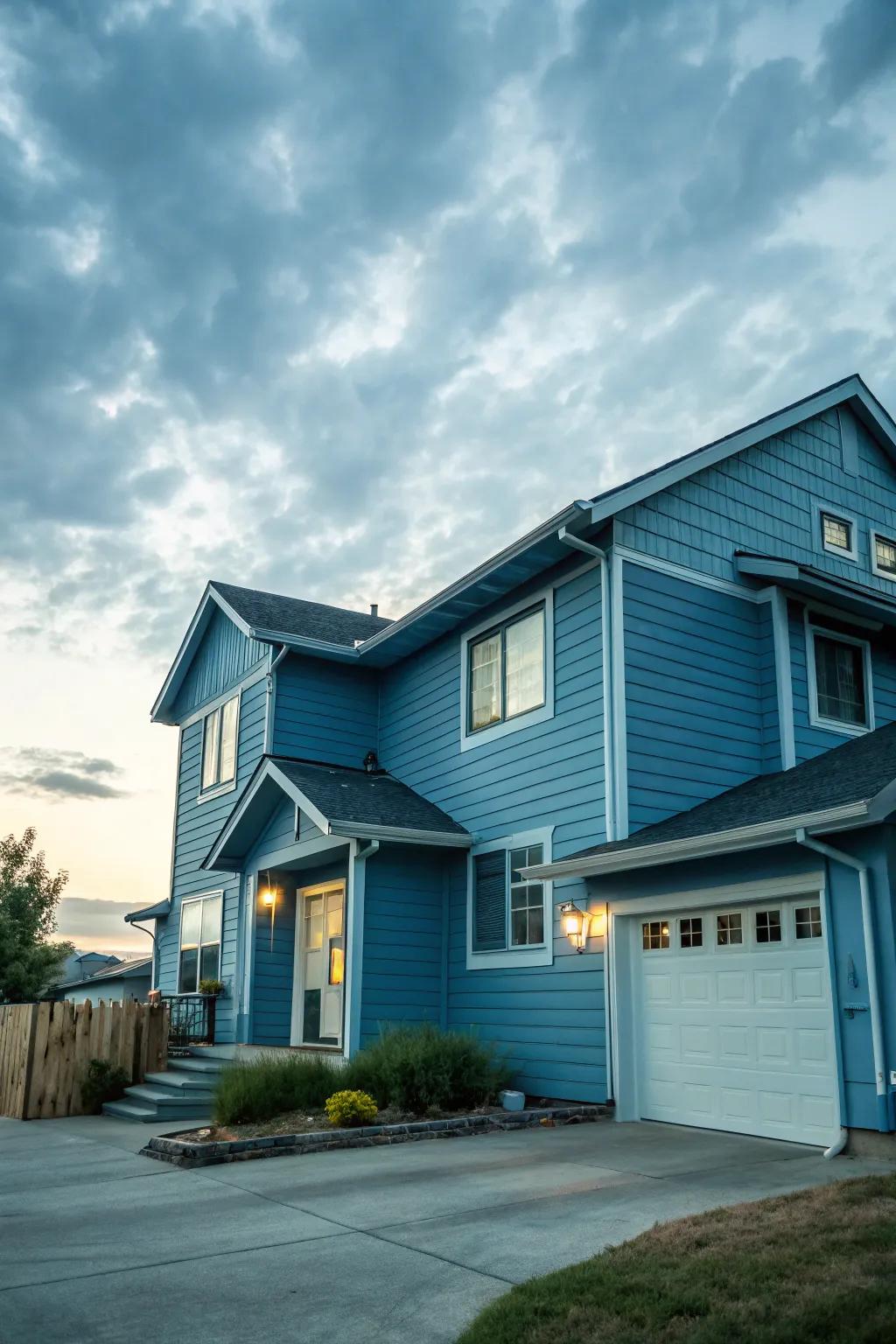
A monochromatic scheme using different shades of the same color can provide a sophisticated, cohesive look. I helped a friend choose varying shades of blue, and it was a hit!
Some handy options:
- Exterior Paint Kit in Various Blue Shades: Transform your split-level home with beautiful blue shades for a cohesive exterior look.
- Blue Outdoor Wall Lights: Enhance your home’s facade with stylish blue wall lights for a unified monochromatic effect.
- Blue Front Door Wreath: Welcome guests with a charming blue wreath that complements your home’s exterior color scheme.
6. Blend with the Landscape
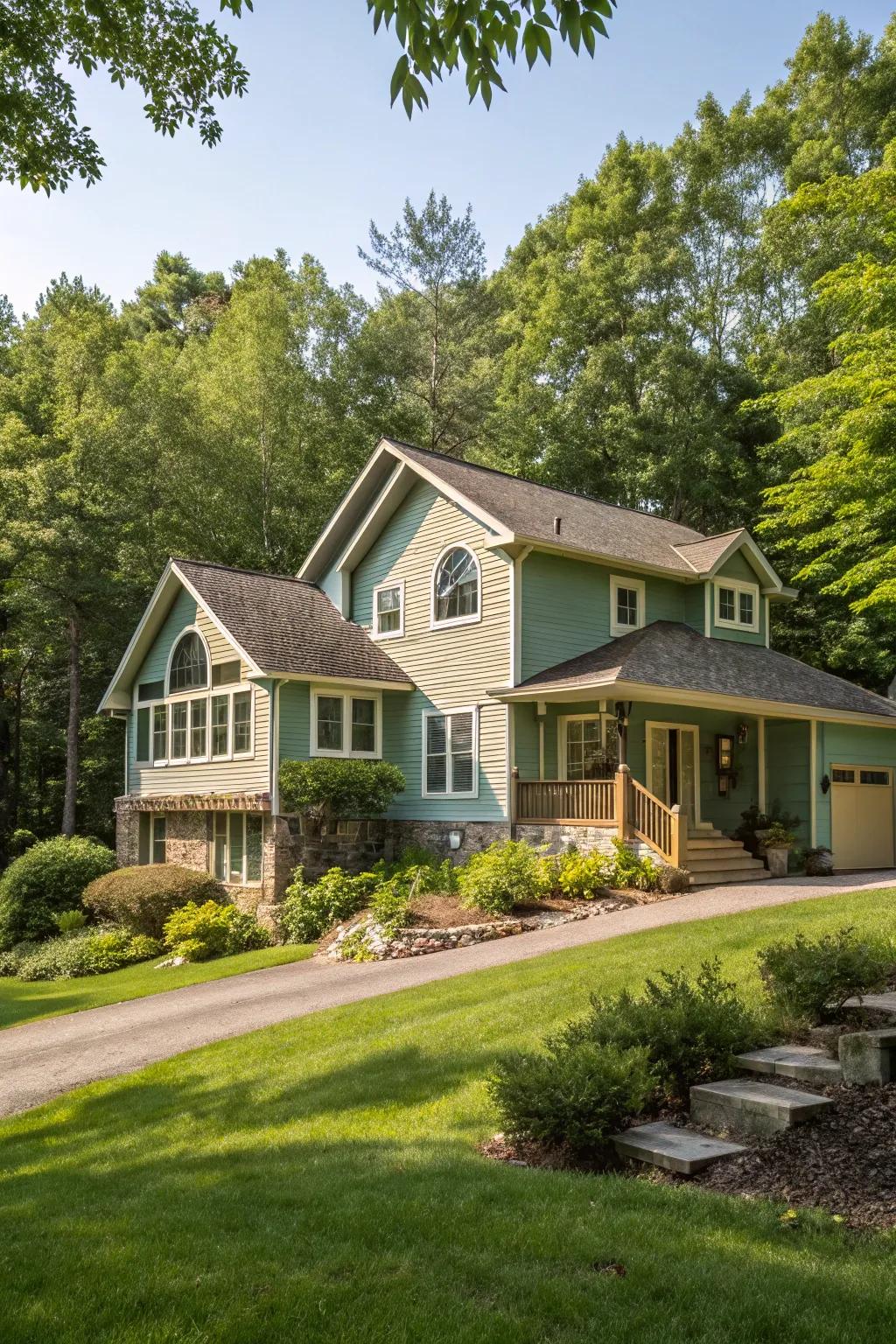
Choose colors that reflect the surrounding landscape for a harmonious look. In Austin, I love using shades that echo the natural terrain, creating a seamless outdoor connection.
You might like:
- Earth Tone Exterior Paint Set: Revitalize your home’s exterior with natural hues that echo the surrounding landscape beautifully.
- Outdoor Solar Pathway Lights: Illuminate your walkways with eco-friendly solar lights that enhance natural appeal and safety.
- Decorative Garden Stone Edging: Define your garden with stone edges that seamlessly integrate with the natural terrain.
7. Experiment with Unexpected Combinations
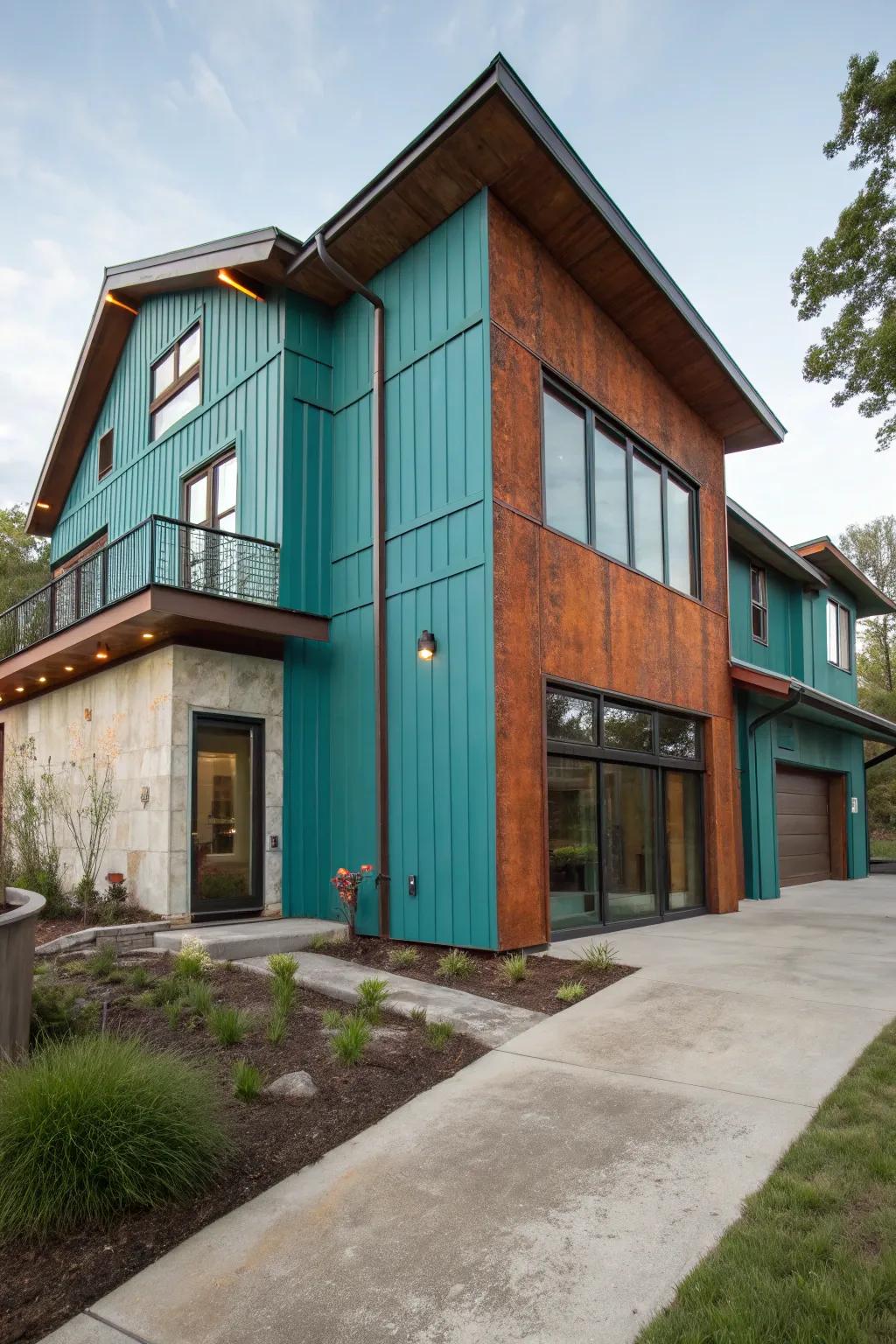
Don’t be afraid to mix unexpected colors for a unique look. I combined teal and rust for a recent project, and the result was a bold and beautiful statement.
Try these:
- Exterior Teal Paint: Transform your home’s facade with vibrant teal paint for a striking and modern appearance.
- Rust Finish Metal Panels: Add rustic charm with rust finish metal panels for a bold and unique architectural style.
- Outdoor Wall Sconces: Complement your bold exterior with stylish outdoor sconces to enhance ambiance and curb appeal.
8. Play with Complementary Colors
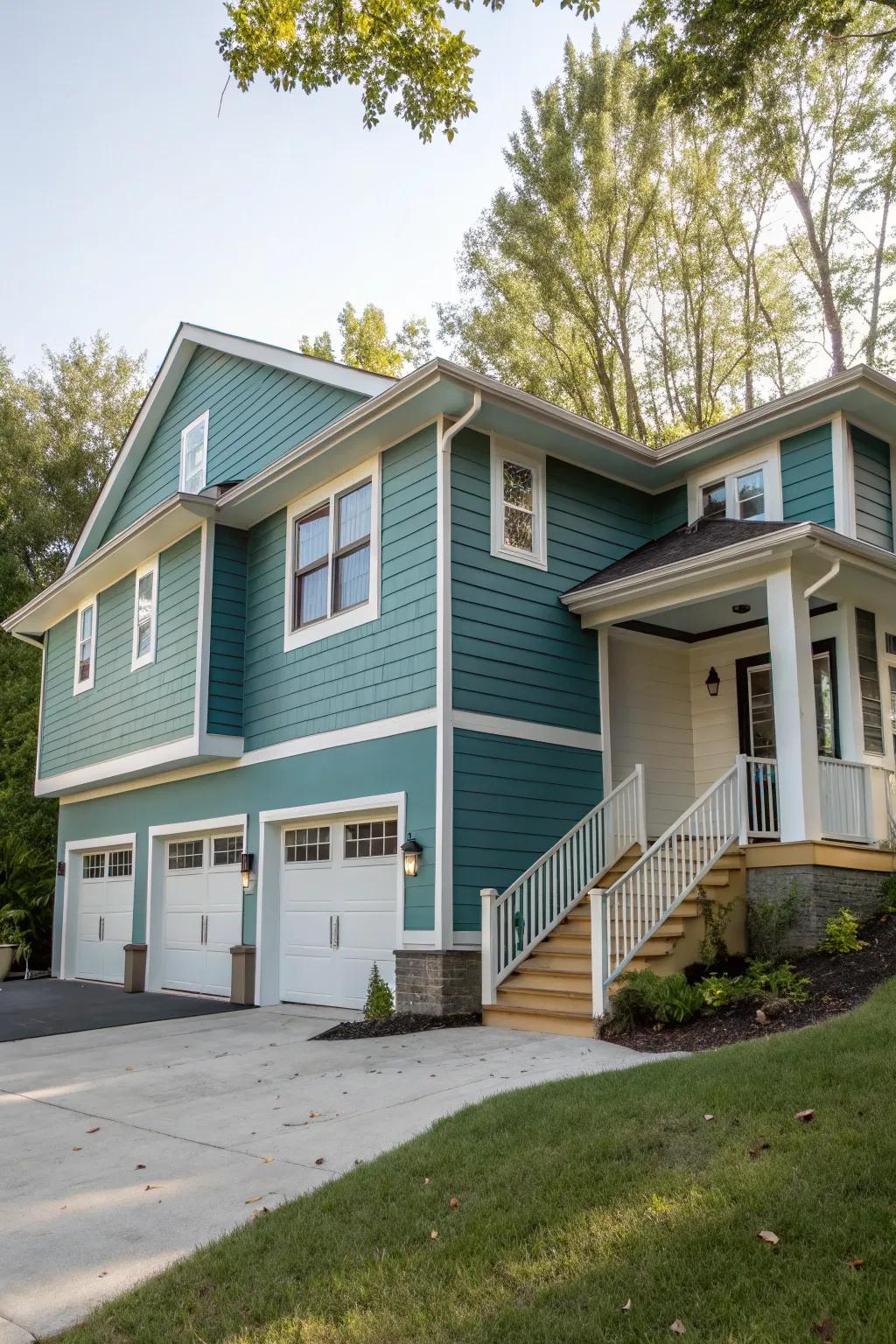
Combining complementary colors can enhance the architectural features of your home. I experimented with complementary shades for a client, and the results were a vibrant, cohesive look that turned heads.
Possibly handy products:
- Exterior House Paint Set: Revitalize your home’s facade with vibrant paint sets perfect for complementary color schemes.
- Decorative Outdoor Lights: Enhance architectural features with stylish outdoor lights to highlight complementary color schemes.
- Garden Landscape Pots: Incorporate colorful plants in stylish pots to complement your home’s vibrant exterior colors.
9. Go Bold with Black and White
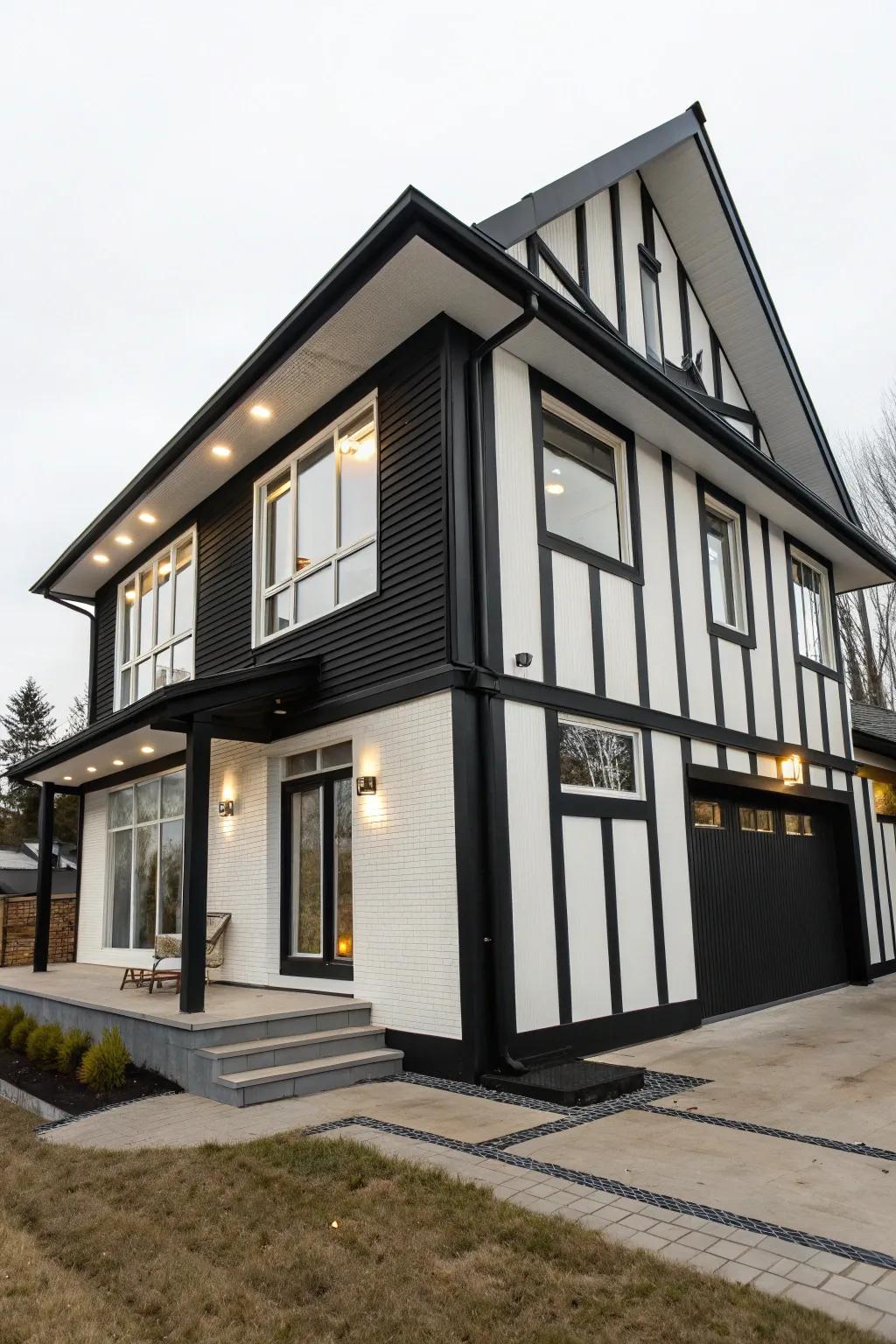
A bold black and white scheme can make your split-level look modern and striking. This timeless combo worked wonders on a friend’s home, giving it an upscale, chic appearance.
Products that could assist:
- Black Exterior Paint: Transform your home’s facade with sleek black paint, adding a modern touch effortlessly.
- White Brick Paint: Refresh your brick surfaces with clean white paint for a fresh, chic look.
- Outdoor LED Sconce Lights: Enhance your exterior elegance with stylish LED sconce lights for inviting night allure.
10. Use Earthy Shades for Warmth

Earthy shades like terracotta and olive can add warmth and coziness to your home’s exterior. In my garden, these colors complement the earthy tones of the plants perfectly.
These products might help:
- Exterior Terracotta Paint: Revamp your home’s exterior with warm terracotta paint. Enhance coziness and natural charm instantly.
- Olive Green Outdoor Planters: Accent your garden with olive green planters. Perfectly complement earthy tones for added warmth.
- Rustic Outdoor Wall Sconce: Illuminate your entryway with a rustic wall sconce. Add elegance and warmth to any facade.
11. Add Texture with Stone

Stone accents can add texture and depth to your home’s exterior. I added a stone facade to my porch, and it transformed the entryway into a grand welcome.
Some ideas to consider:
- Exterior Stone Veneer Panels: Enhance your home’s facade with these easy-to-install stone veneer panels for added elegance.
- Weatherproof Stone Adhesive: Securely attach stone accents with this reliable weatherproof adhesive perfect for outdoor applications.
- Outdoor Stone Sealer: Protect your stone surfaces from the elements with this durable, clear outdoor sealer.
12. Embrace Modern Neutrals
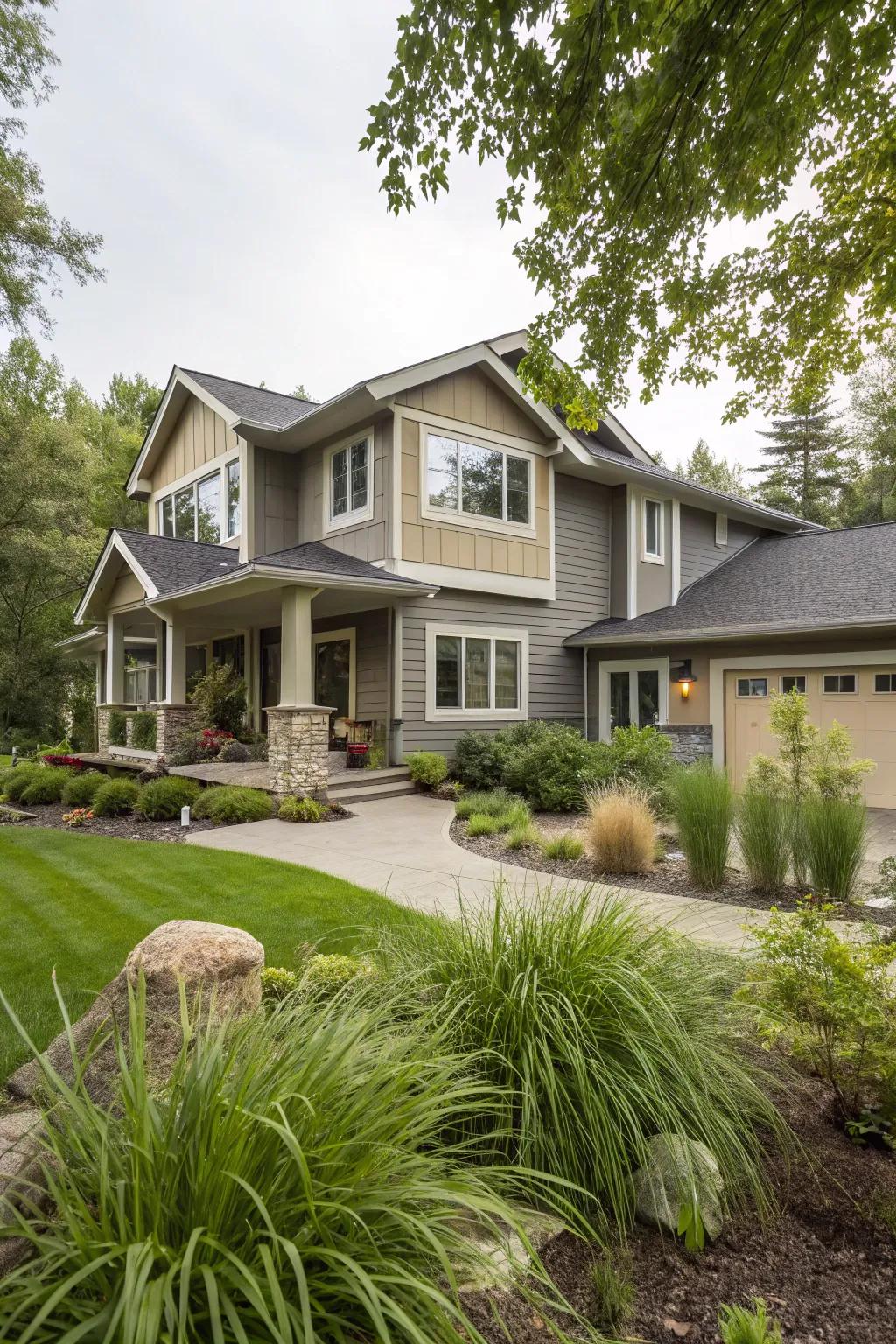
Neutral tones like gray and beige can give your split-level home a sleek and modern look. I once helped a friend choose a soft gray for their split-level, and it brought such a calming vibe to the entire street.
Check these products out:
- Outdoor Gray Paint: Revamp your home’s exterior with sleek gray paint for a modern, calming street appeal.
- Beige Exterior Trim: Enhance your home’s look with beige trim for a subtle, stylish contrast against neutral tones.
- Modern Outdoor Lighting: Illuminate your home with stylish outdoor lighting to complement neutral tones and boost curb appeal.
13. Use Dark Colors for Drama
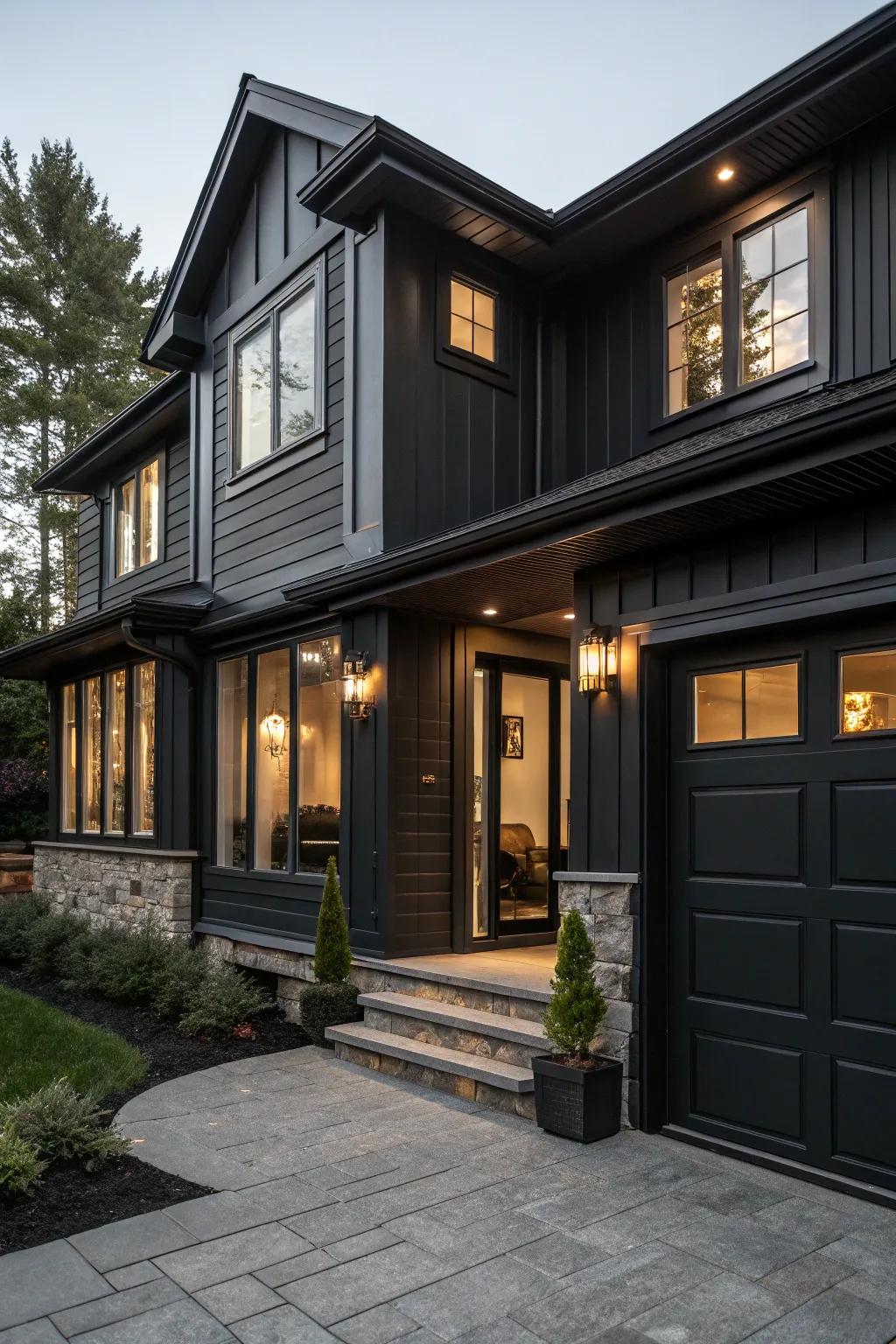
Dark colors like charcoal or deep green can add drama and sophistication to your home’s exterior. I once transformed a client’s home with a deep charcoal, and it looked so chic and elegant.
A few choices to try:
- Exterior Charcoal Paint: Elevate your home’s elegance with sophisticated, deep charcoal exterior paint for stunning curb appeal.
- Outdoor Wall Lights: Enhance your evening ambiance with elegant outdoor wall lights, perfect for a dramatic touch.
- Black Planters: Create visual interest with sleek black planters, adding bold sophistication to your exterior decor.
14. Highlight with Bold Accents
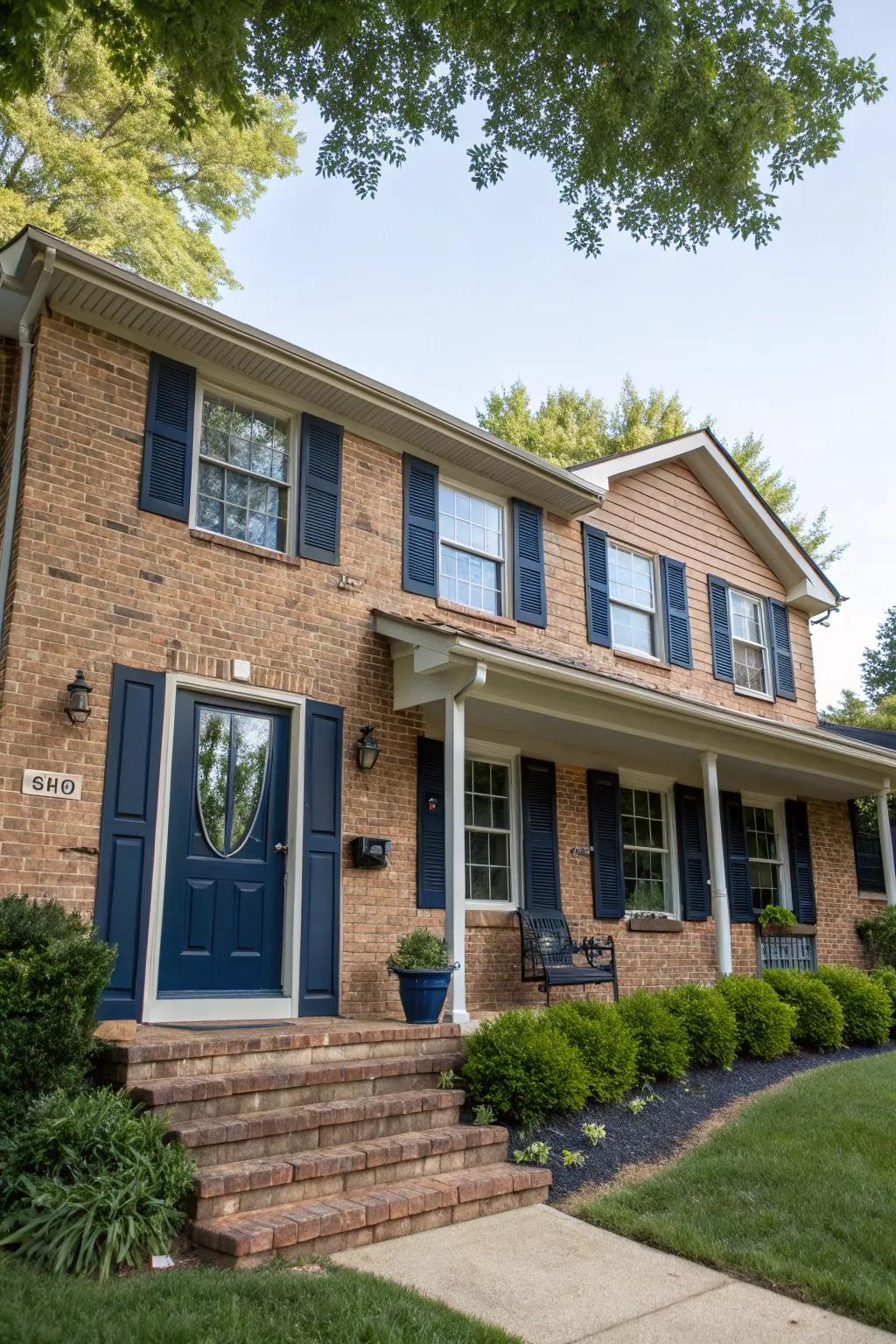
Using bold colors like navy or forest green for accents such as doors and shutters can make a split-level home pop. I love how a navy door added an unexpected elegance to my neighbor’s otherwise classic brick facade.
May just do the trick:
- High-Gloss Exterior Door Paint: Enhance your door with rich navy or forest green, adding a bold and elegant charm.
- Decorative Outdoor Shutters: Transform your home’s façade with stylish shutters in striking bold colors for a stunning look.
- Outdoor Planters in Bold Colors: Accent your entrance with vibrant planters, infusing color and life into your home exterior.
15. Create Contrast with Dark Trim

Dark trim against a lighter facade can dramatically highlight your home’s structure. I tried this on a friend’s house, and the contrast brought out each level’s unique design.
A few things you might like:
- Exterior Paint in Dark Shades: Add striking contrast to your home with quality exterior paint in rich, dark colors.
- Outdoor LED Spotlights: Enhance architectural features at night with strategically placed outdoor LED spotlights.
- Weatherproof Trim Sealant: Ensure durability and protection with a reliable, weatherproof sealant for your dark trim.
16. Create a Coastal Vibe
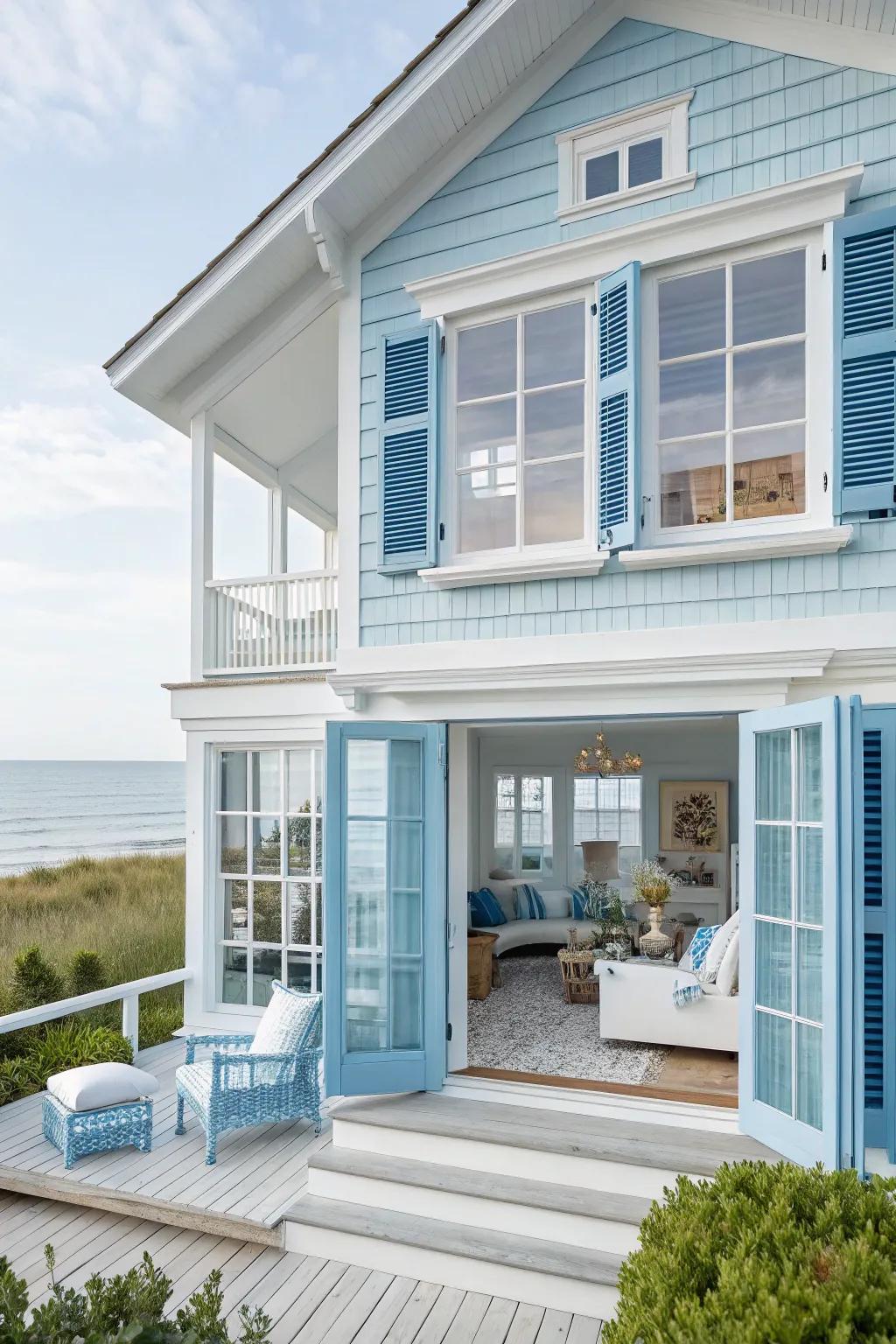
Soft blues and whites can create a serene coastal vibe for your home. I used these colors for a friend’s beachside split-level, and it instantly transported us to a seaside retreat.
Consider these options:
- Soft Blue Exterior Paint: Transform your home’s exterior with soothing blue tones for a refreshing seaside escape.
- White Trim Paint: Accentuate architectural details with crisp white trim that complements any coastal color scheme.
- Outdoor Wicker Furniture Set: Add stylish comfort to your patio with durable wicker furniture perfect for beachside lounging.
17. Incorporate Industrial Elements
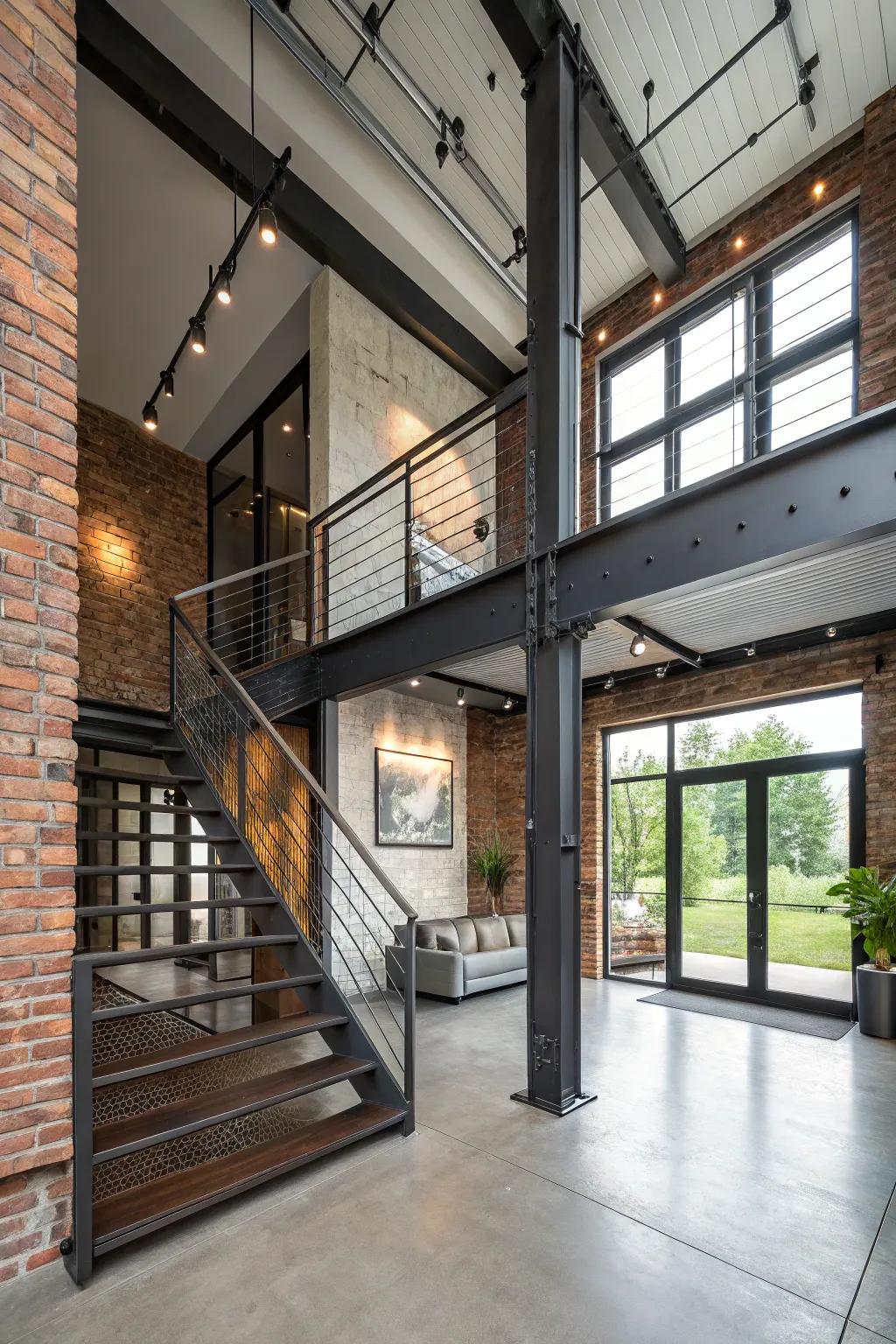
Industrial elements like metal and concrete can add an edgy, modern feel to your split-level. I mixed these with softer elements in a project, and the balance was just perfect.
A few relevant products:
- Industrial Metal Wall Art: Add edgy elegance to your space with industrial metal wall art. Transform your interior today.
- Concrete Planters: Elevate your decor with sleek concrete planters, perfect for an industrial-modern aesthetic.
- Metal Pendant Lighting: Brighten your space with industrial flair using stylish metal pendant lighting. Illuminate with character.


